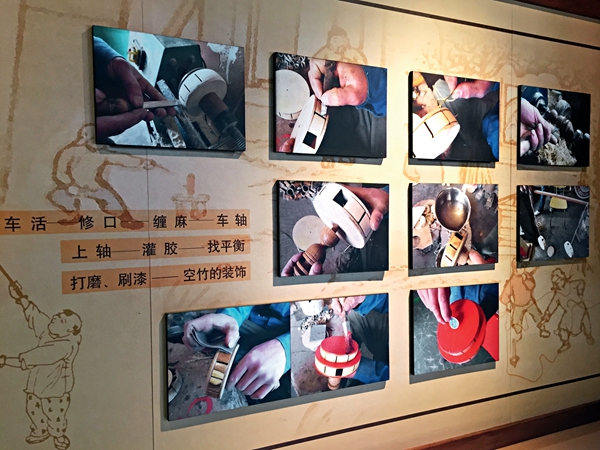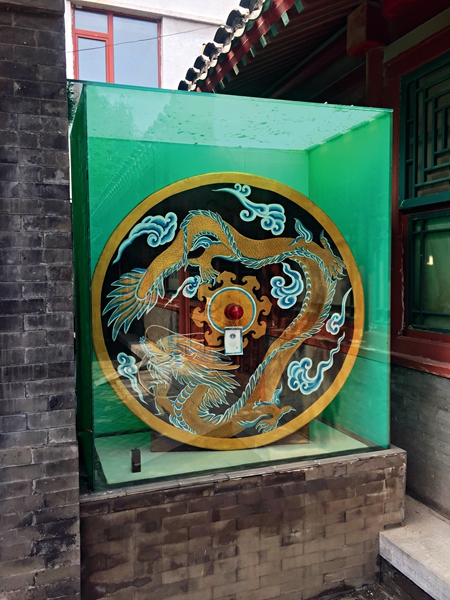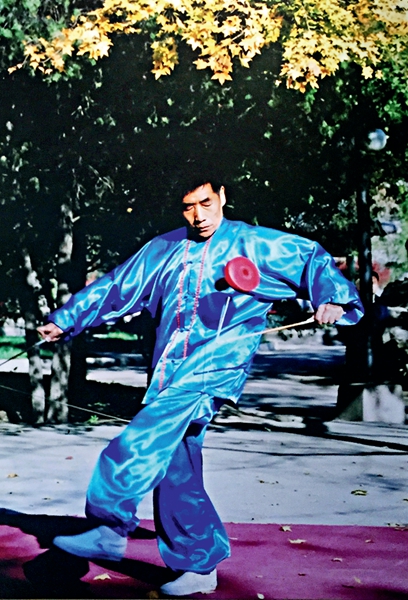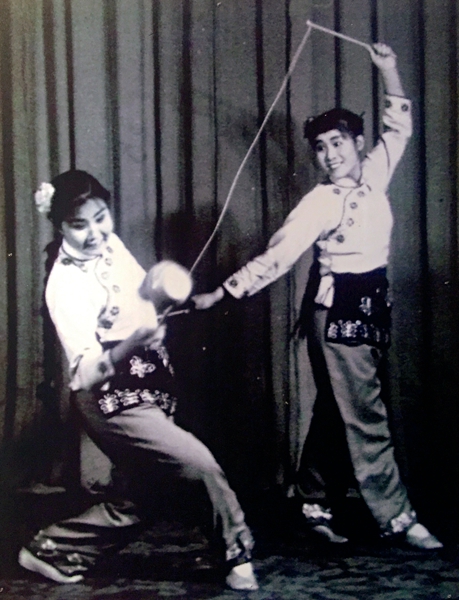Beijing Diabolo Museum
- By Brian Salter
 0 Comment(s)
0 Comment(s) Print
Print E-mail China Today, November 30, 2017
E-mail China Today, November 30, 2017
It's there on the maps for all to see: Beijing's very own Cephalostachyum Museum; or as some other maps label it, a museum of "empty bamboos."
Puzzled? I'll admit I was. According to Wikipedia, Cephalostachyum is "a genus of Asian and Madagascan bamboo in the grass family. The plants are of small to medium size compared to most other bamboo. Their choice habitats are mountain to lowland forests."

Ever curious, I made my way to Guang'anmennei on Line 7 of Beijing's subway system. Some 200 meters away is what looks a bit like a building site. And on a wall behind piles of paving slabs is a mural that depicts people playing with diabolos.
A little further on is a traditional quadrangle courtyard house, with "北京空竹博物館 " written over the entrance. According to my smart phone translator, I have arrived at the Beijing Diabolo Museum.
Mystery solved! A Diabolo – or Chinese yoyo, as they are sometimes referred to – is traditionally made of bamboo and wood. It is an empty roller, shaped like a dumbbell, which is spun and tossed on a string tied to two sticks, one held in each hand. An empty roller made of bamboo? The empty bamboo museum? The penny finally drops!
In the entrance to the courtyard is a mural that says it all... this is definitely a place dedicated to diabolos.
Ancient Toy
The history of playing with diabolos dates back about 1,000 years, when it developed as a pastime for the Chinese nobility. During the Ming Dynasty (1368-1644), it gradually passed down to "ordinary" people; but it wasn't until the Qing Dynasty (1644-1911), that playing with, and selling, diabolos at temple fairs during the Spring Festival became a firm tradition. The diabolo also evolved into a popular juggling item on the streets and finally ended up in acrobatic performances as well.

In fact, diabolo spinning has been listed as one of China's intangible heritages. It's a lot harder than it looks, though if one has the tenacity to keep on practicing, several diabolos can be spun on a single string at one time. Part of the beauty of diabolos – or devil's sticks, as they are also known – is the number of amazing things you can do with them.
The technical name for a diabolo is actually "kongzhu," although it also has many regional nicknames, such as "wind gourd" in Tianjin, or "che ling" meaning "pull the bell" in southern China.
They come in a variety of sizes – from the length of a finger nail to the width of a car tire, and in shapes such as dragons, balls, and flowers. Anyone who has ever gone to a modern Chinese acrobatic performance will definitely have seen displays of dexterity when the acrobats strut their stuff with these infernal devices. The diabolo was officially added to acrobatic performances in China as far back as 1950. As the diabolos are spun, they make a unique whistling or buzzing sound, which is said to symbolize the awakening of spring.

This 200-square-meter museum was first opened in May 2009, and was the first "intangible cultural heritage" themed museum to be sited inside a Beijing community.
The Diabolo Museum houses over 400 diabolos and is divided into three halls, presenting the development of diabolos in terms of their history, techniques, and playing tricks. Some notable exhibits include diabolos that are over 100 years old, the largest diabolo in the world, mini diabolos, and a diabolo once spun by Puyi – the last emperor of China, and clay sculptures of diabolo spinning in ancient times. There are also plenty of old photographs showing them being sold on the streets in days of yesteryear; and lest you have any worry about what you can do with one of these "toys," there are diagrams to help you out as well.
Here you will find cases full of diabolos, some pretty and others not-so-pretty. As there are no notices in English, it is worth taking your cellphone with an instant camera-translation app already loaded.
Traditional diabolos are hand-made, and the complicated process goes through about 17 procedures, including cutting the bamboo, making the body, polishing the wood, and adding an axle; but the tools used are pretty basic wood-working tools, as well as a small lathe and a worktable.

Also on display is a collection of the sticks used to control the diabolos. Initially, both the spools and the sticks of the Chinese diabolo were made of bamboo, but now they come in a variety of materials such as plastic, wood, and rubber.
My favorite set of diabolos comes as a Chinese Chess board, the individual diabolos being the chess pieces which can be moved around.
According to the experts, there are now about 1,000 ways of playing with one of these devices. Not only can you create difficult tricks with them, but in circuses they are also combined with elegant dancing, while the performers kick shuttlecocks, ride bikes, roller-skate, or take part in many other activities at the same time.

As an art form, it's no surprise that the performers' costumes are just as important as the overall act, and sure enough this museum displays some of the costumes worn in famous performances.
There are still hundreds of diabolo organizations across China. In Beijing alone, it is said that at least 10,000 people play with them; and some 30 schools in the capital now list diabolo playing as one of their courses!
One of the most prominent items on display takes one back to November 1, 2007 when the most shuttlecock kicks while spinning a diabolo for one minute were made. Yunji Liu achieved 69 kicks, setting a new Guinness World Record.
I somehow think I'd be lucky to achieve even one kick of a shuttlecock while doing anything with one of these infernal devices.
To get to the Diabolo museum, board Line 7 to Guang'anmennei and take exit B. Ahead of you is Baoguosi with Guangning Park on your left. Walk ahead 50 meters and turn left into Xiaoxing Hutong. After about 200 meters you pass a public toilet on your left and the museum is just after that on your right.
Brian Salter is a broadcaster and journalist who has been working in China for the past five years.





